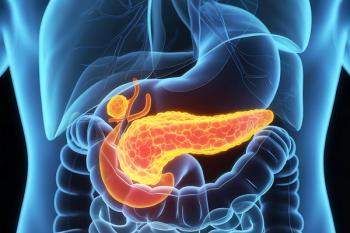
PFAS Researchers Call for Access to PFAS Reference Standards from Manufacturers
In a commentary published in Environmental Health Perspectives, researchers voiced concerns about the limitations in PFAS research due to restricted access to high-purity reference standards.
Scientific research into the impact of per- and polyfluoroalkyl substances (PFAS) on human health and the environment is hindered by limited access to high-purity reference standards, according to a team of researchers led by Xenia Trier, an associate professor from the University of Copenhagen, Denmark, and Stefan van Leeuwen, a senior scientist focusing on chemical pollutants at Wageningen University and Research, The Netherlands (1).
The researchers raised their concerns in a commentary piece published in Environmental Health Perspectives (1). The article highlighted that high-purity reference standards are essential to study PFAS and other potentially harmful pollutants, but these standards are not readily available from the companies who produce these substances commercially. Only 6% of the 10,0000 PFAS identified by the European Chemicals Agency (ECA) have a reference standard associated with them (1), and different PFAS compounds do not have the same physical, chemical, or toxicological properties, according to the researchers. The European Environment Agency (EEA) has also previously reported that there is a lack of suitable reference standards for the estimated 10,000 chemicals on the European market (2).
The researchers proposed that manufacturers of PFAS and other chemicals could deposit reference standards, including metabolites precursors and intermediates, in a centralized public resource. This type of resource already exists in the US and is implemented by the U.S. Environmental Protection Agency (EPA) to monitor pesticides as part of the requirement for the National Pesticide Standard Repository (3), according to Trier and co-authors. The article also emphasized that a similar system is in place to monitor food contact materials in plastic conducted by the European Reference Laboratory Food Contact Materials (EURL-FCM) initiative (4).
The researchers proposed that implementing PFAS into a similar system could be integrated into the upcoming revision of the European Union’s EU’s REACH regulations that govern chemical safety standards. Xenia Trier told LCGC International: “An inventory of the chemical reference standards is key for both authorities and scientists to generate evidence on whether the chemicals regulation is effective or not in reducing pollution. The revision of REACH is a unique opportunity to put the cost upfront. This will allow the potential polluter to internalize the cost of standards in the product where it belongs, rather than leaving it to society to pay for.”
The researchers also suggested alternative solutions to tackle this issue if reference standards were not readily available; this would involve changing the criteria used to identify and quantify chemicals and alternative analytical approaches. These alternatives include semi-quantitative analytical methods such as those used for food contact materials (5); incorporating more “read across” assessments where the toxicity and quantitation data are based on substances with similar structures. A “read across” approach is allowed for alternatives to animal testing when companies register compounds under REACH and is used in 75% of cases (6), according to the researchers. Another possibility is using “total assessed” screening methods to assess large groups of analytes, such as those used to evaluate organohalogens by combustion ion chromatography (CIC) (7,8).
The researchers highlighted that less-specific approaches were not ideal, but it is unlikely that approximately 10,000 PFAS reference standards will become available in the near future. Stefan van Leeuwen told LCGC International:“The bottom line here is what uncertainty one is willing to accept in risk assessment and chemical management. Sticking to only a handful of standards may provide you with very robust hazard and exposure data, but you would miss many other PFAS chemicals for which no standard is available, which is, by definition, very uncertain. This ‘street lantern’ (ignoring any other chemicals for which you have no standard) is in our view an undesirable effect, and leaves a large part of the PFAS chemical space uncovered. We therefore plea for using read-across and comprehensive analytical methods.”
“For example ‘PFAS-total’ methods are being developed and applied such as combustion ion chromatography, PIGE, 19F-NMR and also HRMS suspect screening. The current discussion there is about representativeness of these methods for the total-PFAS load in samples. If that can be resolved in the short term, this would pave the way for a wide application of these methods. Another important development the use of estimated response factors in LC–HRMS. Using “read-across”, these response factors for únknown’ PFAS are estimated from other PFAS for where standards are available.”
He added: “This allows semi-quantifying many more PFAS for which no standards are available, allowing to put at least an estimated concentration on a finding in food, water, sludge, blood or any other sample. I expect that these approaches will be more commonly applied over the next years. Of course, the ultimate users of such data — risk assessors and policy makers — need to think about these developments and if these semi-quantitative data can be used in risk assessment and management.
AOAC International—a globally recognized, non-profit scientific organization that develops standardized, validated analytical testing methodsto ensure accuracy and reliability— has established a PFAS program to systematically address needs for standardized method performance requirements and official methods for PFAS analysis in food and food contact materials (9). Katerina Mastovska, deputy executive director and chief science officer at AOAC International commented to LCGC International: “Reference standards are essential for validation of quantitative methods and their routine use. The limited availability of PFAS reference standards results in a limited scope of targeted methods for PFAS analysis. It also affects non-targeted analysis because reference standards are critical for proper identification of PFAS detected using non-targeted analytical workflows.”
References
1. Trier, X.; van-Leeuwen, S. P. J.; Brambilla, G.; Weber, R.; Webster, T. F. The Critical Role of Commercial Analytical Reference Standards in the Control of Chemical Risks: The Case of PFAS and Ways Forward. Environ. Health Perspect. 2025, 133 (1), 015001. DOI:
2. EEA 2020. Chapter 10. Chemical Pollution. In: The European Environment State and Outlook 2020. Luxembourg; Publications Office of the European Union, 230-251
3.https://www.epa.gov/pesticide-analytical-methods/national-pesticide-standard-repository,
4.
5. Pieke E. N.; Granby K.; Trier X.; Smedsgaard J. A Framework to Estimate
Concentrations of Potentially Unknown Substances by Semi-quantification in Liquid Chromatography Electrospray Ionization Mass Spectrometry. Anal Chim Acta. 2017, 975, 30–41. DOI: https://doi.org/10.1016/j.aca.2017.03.054
6. ECHA. 2014. The Use of Alternatives to Testing on Animals for the REACH
Regulation - Second Report Under Article 117(3) of the REACH Regulation.
https://echa.europa.eu/documents/10162/13639/alternatives_test_animals_
2014_en.pdf/587d000c-688e-4cdd-9f59-f7d7aacc677b [accessed 21 May 2024].
7. EPA. 1994. EPA Method 9020B: Total Organic Halides (TOX), Revision 2.
Washington DC: EPA. 948
8. Kristiana I, McDonald S, Tan J, Joll C, Heitz A. 2015. Analysis of Halogen-
specific TOX Revisited: method improvement and application. Talanta 139,104– 110
DOI:
9.
Newsletter
Join the global community of analytical scientists who trust LCGC for insights on the latest techniques, trends, and expert solutions in chromatography.





